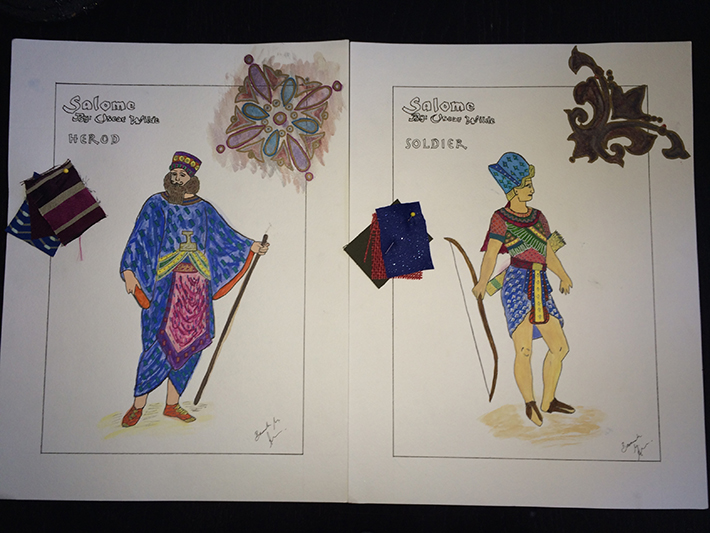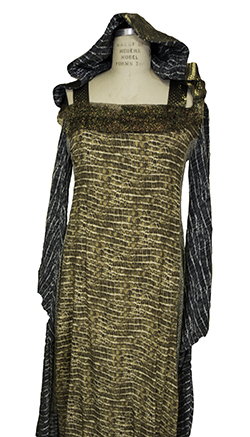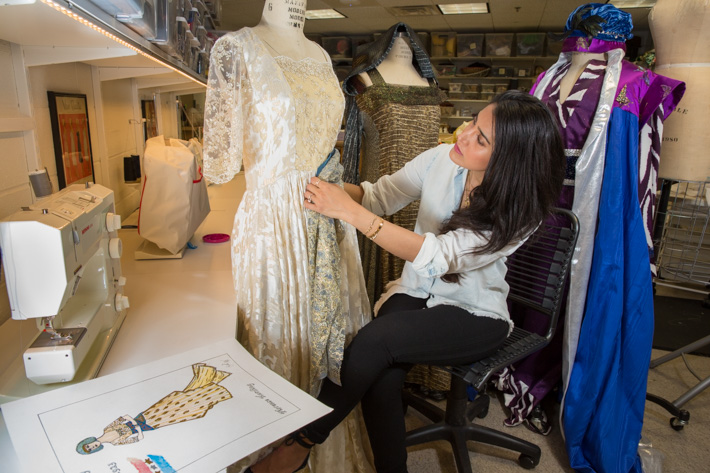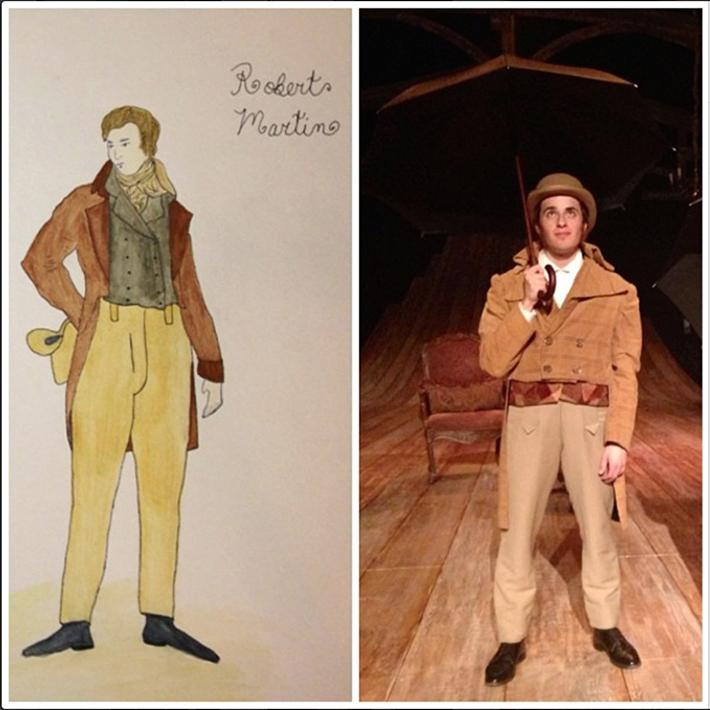When Basmah Alomar was 15 years old, most of her friends were desperate to get their driver’s permit. She had her eye on something completely different: a sewing machine.
Her parents gave her the shiny contraption on her birthday. Ms. Alomar spent hours hunched over the needle, teaching herself how to sew. She started off easy, learning first to make tote bags, and progressed while attending Marymount University as an undergraduate student.
Then she came across the George Washington University ‘s M.F.A. in production design with a focus on costuming. Once she enrolled, she began a career of bringing characters alive through clothing. For the past few years, she’s lent her talents to D.C.’s Ambassador Theater and the Washington Stage Guild, where she’s mastered the art of translating scripts into style made for the stage.
“I got into this beautiful world that mixes theater and history, and it’s been so fulfilling, so enlightening and so different than anything I’d ever done,” she said. “If I wanted to become a designer, how would I have the credibility to do it in a professional sense without this solid base?”

Fashion was always in the cards for Ms. Alomar. As a child, she’d refuse to let her mother pick out her outfits, insisting on dressing herself. Her approach to clothing was always very serious. She dismissed trends and would instead marvel at the construction of a garment and the history behind a design. Today, she can rattle off what eras have inspired international catwalks from memory—she remembers a Dolce & Gabbana show that paid homage to pre-Byzantine Greece, a Chanel line of ancient medieval looks.
Her Saudi Arabian heritage has also left a deep imprint on her aesthetic. Ms. Alomar watched how the women in her family pulled together looks with a distinctive, elegant flair, and said that the careful consideration with which Arab women dress is reflected in her work.
“I think that because I’m from Saudi, I have a certain flavor that comes from knowing a different part of the world,” she said. “In my culture, presentation is very thought through, and it’s a big part of who I am.”
Given her unique perspective, it was easy for Ms. Alomar to immerse herself into drama. She worked on several GW productions, including the play “Emma,” "Amahl and the Night Visitors," "Salome," and a series of DanceWorks performances with professor Dana Tai Soon Burgess. In the fall of 2012, she learned through her program that the Washington Stage Guild was looking for a costume designer for their production of “Pygmalion,” the play that inspired Audrey Hepburn’s “My Fair Lady.” It became her first professional theater job.

She studied each character carefully and picked costumes that represented their personalities—for example, she made a dark green belt to contrast a vibrant red smoking jacket to bring out one character’s pompous, attention-loving attitude.
“You really have to think about each character individually and pay attention to his or her own traits. If a character is comedic, you might add something fun, like a little flower, to their suit. You have to interpret them and add your own touch to every show you’re doing,” she said.
“Pygmalion” was good practice for her next professional production. The Ambassador Theater was producing a Greek comedy called “Dyskolos” and enlisted Ms. Alomar to make four toga-style dresses. She didn’t want the costumes to be ordinary, white Grecian outfits. Instead, because the actors in the show played dual roles, Ms. Alomar created two-toned togas that were lightly colored on one side and darkly colored on the other. She had traveled to Saudi Arabia, and put her personal stamp on the pieces by decorating them with beautiful Middle Eastern trims that popped onstage.

“In theater, you have to really be mindful of how the colors look onstage—sometimes, they might get washed out,” she explained. “The thing is that the audience wants to see the costumes, and if even one thread is hanging out, they can always tell.”
In February, the Washington Stage Guild brought her back for “Back to Methuselah.” The play starts off with Adam and Eve in the Garden of Eden and spans several centuries. One of the central costumes was for the character of the serpent. Ms. Alomar found a snakeskin print and used the fabric to create a dress that slithered to the floor. The piece was a showstopper onstage, and today is one of the creations she’s most proud of making.
Ms. Alomar worked on the Ambassador Theater’s “Happily Ever After” before the end of last semester and has spent her summer putting together pieces for her thesis. She is contemplating where she’d like to launch her career once she finishes her master’s degree in August—she’s thought about New York and Los Angeles, and also considers returning to Saudi Arabia. Her hope is to work for a larger theater and be part of a collaborative creative time, but one day, she dreams of starting her own fashion line. She said the experience she’s gained through GW has made the possibilities endless.
“Working in a creative field and seeing how things can be done is so helpful,” she said. “I got the chance to do a lot of professional shows for someone who is still in school, and I really appreciated how GW gave me those opportunities.”








